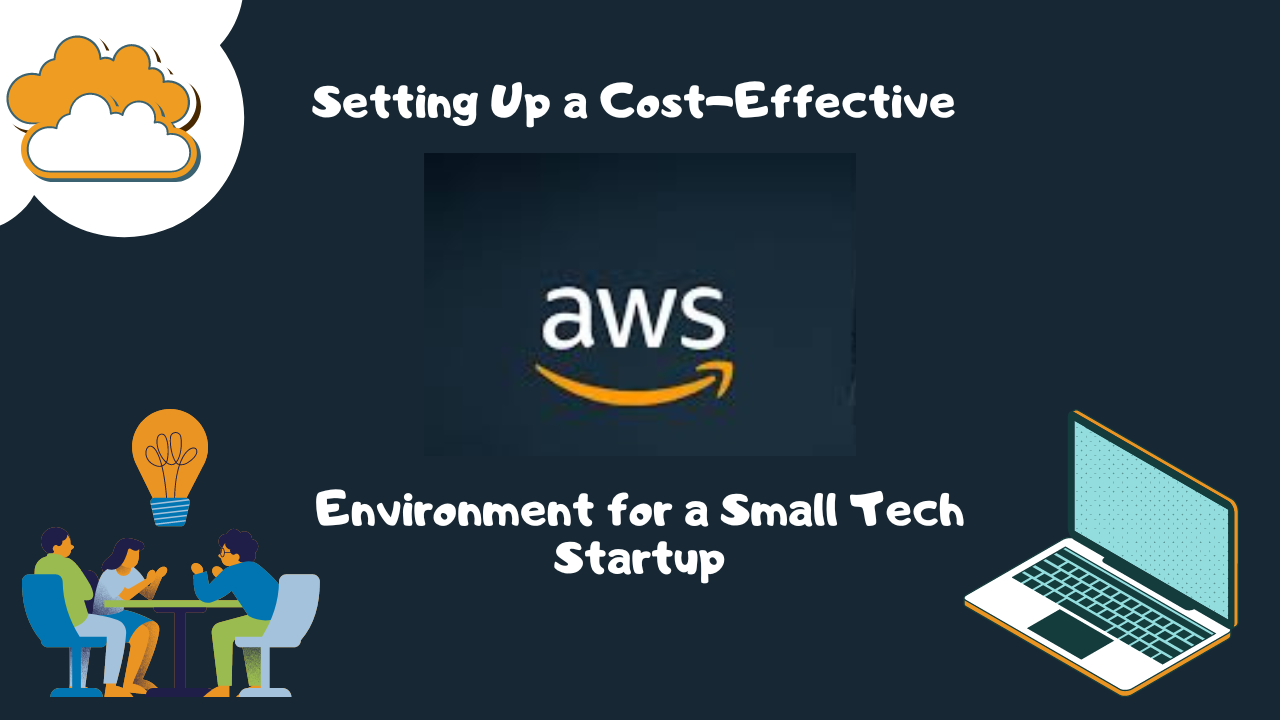Setting Up a Cost-Effective AWS Environment for a Small Tech Startup
 Oluwadamilola Salami
Oluwadamilola Salami
Starting a tech venture can be exciting but comes with the challenge of managing resources effectively, especially in cloud infrastructure. Amazon Web Services (AWS) offers a scalable and flexible platform, but setting up and managing your AWS environment cost-effectively is crucial. This guide will walk you through the basic steps of setting up an AWS environment, managing user access, and monitoring costs to ensure your startup stays within its budget.
AWS Environment Familiarization
The AWS Management Console
The AWS Management Console is the web-based interface for managing your AWS resources. To access it, visit the AWS Console website https://aws.amazon.com/console/ and sign in with your AWS credentials.
Navigating AWS Services
The AWS Management Console is organized into services. You can find the service you need by using the search bar or browsing through the categories on the left-hand side of the console. For this tutorial, we will focus on the following services:
EC2 (Elastic Compute Cloud): Used for launching virtual servers.
S3 (Simple Storage Service): Used for storing objects in the cloud.
IAM (Identity and Access Management): Used for managing user access to AWS resources.
Important Settings and Information
Region: Choose a region that is geographically close to your users for low latency.
Availability Zones: Understand the concept of Availability Zones for redundancy and fault tolerance.
Billing and Cost Management: Familiarize yourself with the AWS pricing model and cost management tools.
Basic IAM Setup
Importance of IAM
IAM is crucial for ensuring that only authorized users have access to your AWS resources. By creating IAM users and assigning appropriate permissions, you can prevent unauthorized access and maintain security.
Creating an IAM User
Go to the IAM service in the AWS Management Console.
Click on "Users" in the left-hand navigation.
Click "Add user."
Enter a username and select "Programmatic access."
Click "Create user."
Download the access key ID and secret access key. Store these credentials securely.
Creating an IAM Group
In the IAM service, click on "Groups."
Click "Create group."
Give the group a name (e.g., "General Users").
Attach policies to the group. For example, you might attach the "AmazonEC2FullAccess" policy for users who need to manage EC2 instances.
Assigning Basic Policies/Permissions
Read-only access: For users who only need to view resources but not modify them, attach policies like "AmazonS3ReadOnlyAccess."
Limited access: For users with specific tasks, create custom policies that grant only the necessary permissions.
Cost Monitoring and Management
Using AWS Budgets
AWS Budgets allows you to set custom cost and usage budgets that alert you when you exceed your budgeted amount.
Setting Up a Budget:
Navigate to the Billing dashboard and select "Budgets."
Create a budget based on cost, usage, or savings plans.
Set the budget amount and notification preferences.
Enabling Cost and Usage Reports
Cost and usage reports provide detailed insights into your AWS spending, helping you identify areas where you can cut costs.
Step-by-Step Guide:
In the Billing console, go to "Cost & Usage Reports."
Create a report and select the data to include (e.g., monthly costs by service).
Specify the S3 bucket where the report will be stored.
Monitoring with AWS Cost Explorer
AWS Cost Explorer allows you to visualize your spending patterns and identify trends.
Using Cost Explorer:
Access Cost Explorer from the Billing dashboard.
Select the time range and filter by service, region, or usage type.
Analyze the data to find areas where you can optimize spending.
Conclusion
Setting up a cost-effective AWS environment is essential for any tech startup looking to scale efficiently. By following these steps, you have laid the foundation for a cost-effective AWS environment. Remember to continuously monitor your AWS usage and adjust your setup as needed to optimize costs and maintain security.
Subscribe to my newsletter
Read articles from Oluwadamilola Salami directly inside your inbox. Subscribe to the newsletter, and don't miss out.
Written by
